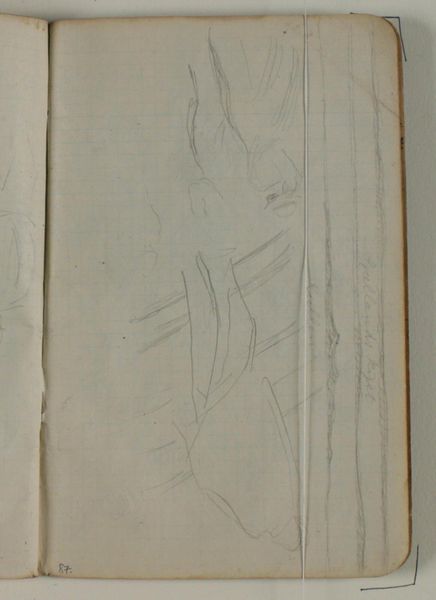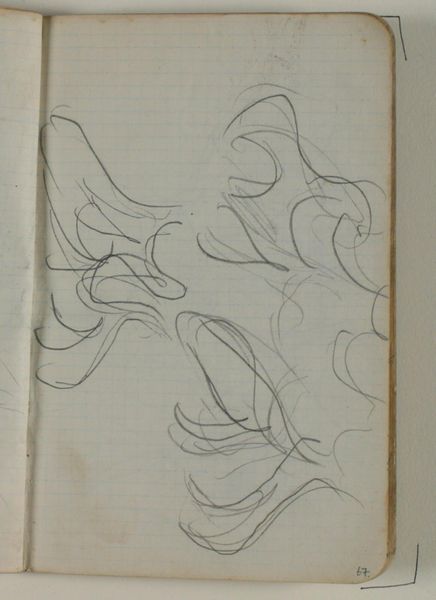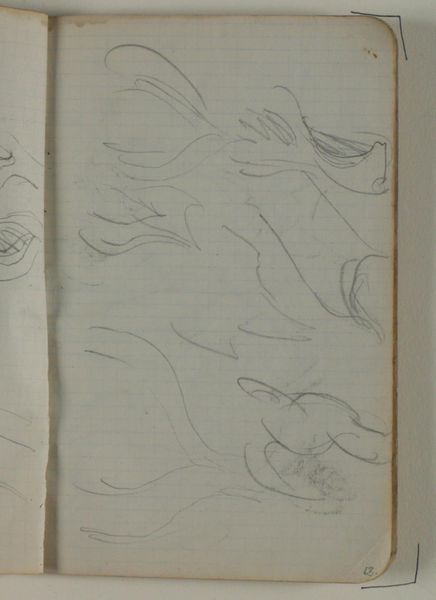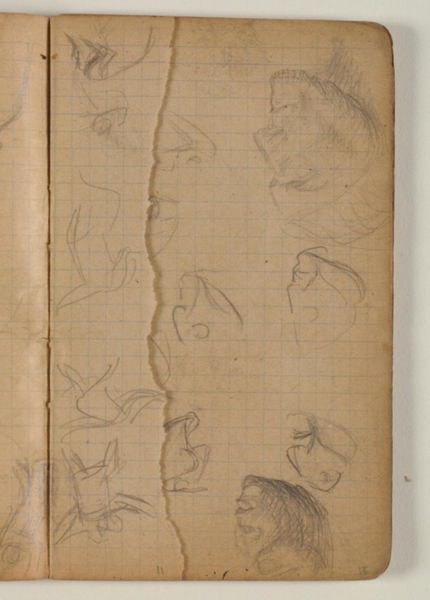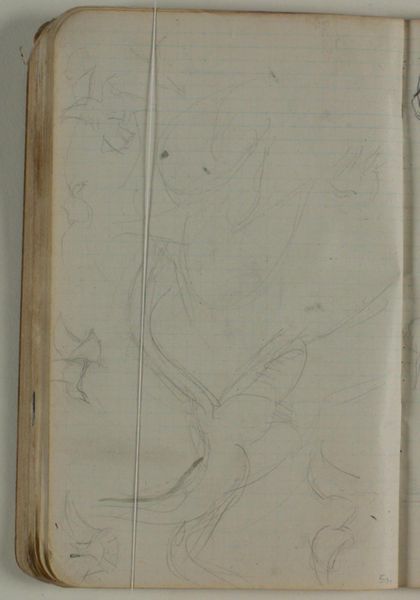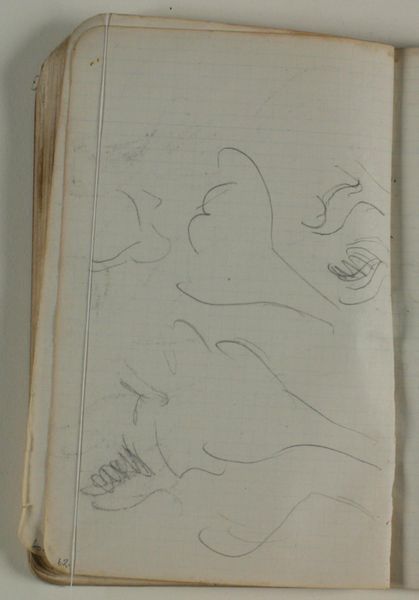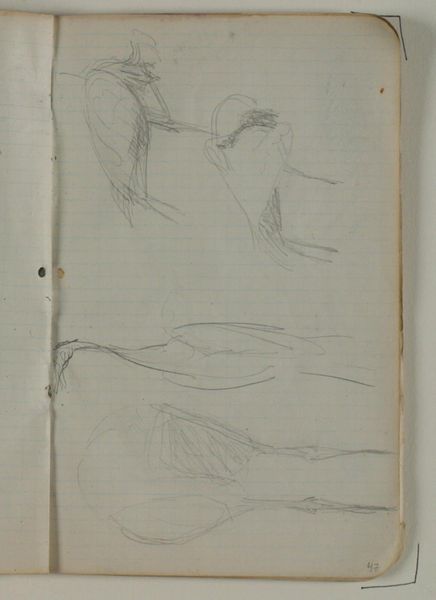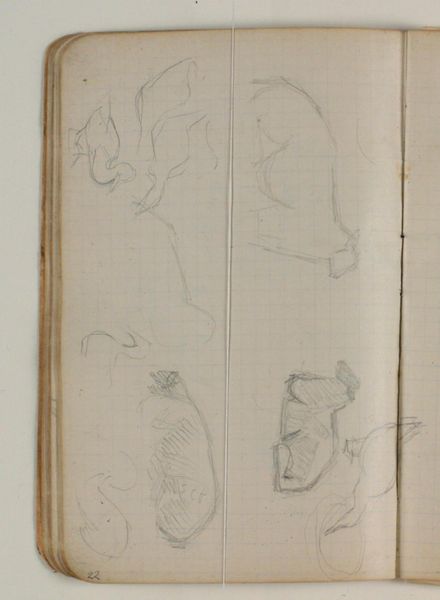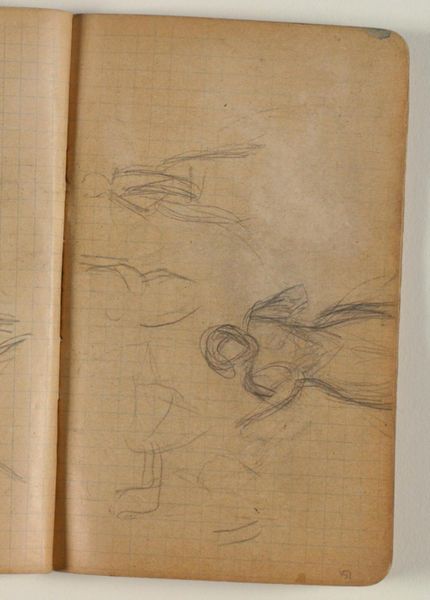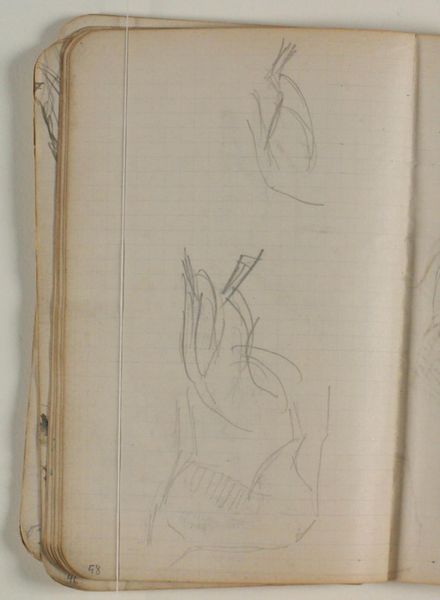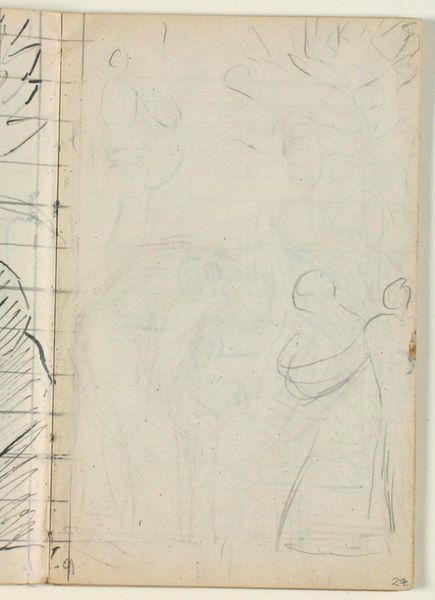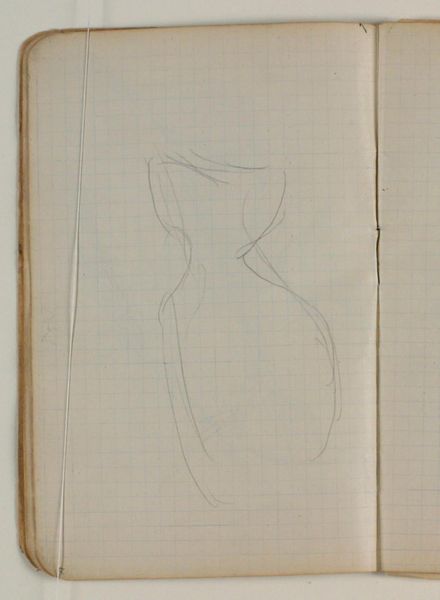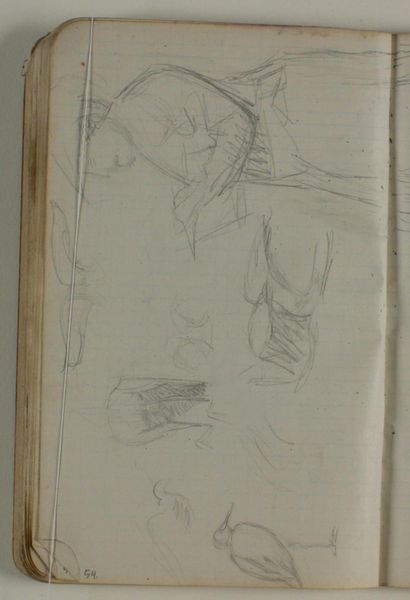
drawing, paper, pencil
#
drawing
#
landscape
#
figuration
#
paper
#
pencil
#
line
Dimensions: 175 mm (height) x 110 mm (width) (bladmaal)
Curator: Welcome. We're standing before "Skitser af h\u00f8nsefugle" – Sketches of Poultry – created between 1900 and 1905 by Niels Larsen Stevns. It's currently held here at the SMK, Statens Museum for Kunst. What are your initial thoughts? Editor: The simplicity is striking. Just pencil on paper, the stark lines creating a quiet intimacy. There’s something fragile about the sketches, a momentary glimpse into form and motion. Curator: Absolutely. The choice of a common subject, fowl, rendered on ordinary paper speaks volumes. Stevns elevates the mundane through skillful application of line. It removes the subject from an industrial context and emphasizes it on labor. He could have used charcoal and finer paper. Editor: The beauty arises precisely from those stark constraints. It's about capturing the essence of the birds. How the line evokes the softness of feathers and implied movement. I see semiotic economy here— a clear symbolic representation achieved through minimalist means. Curator: I see how it does feel as capturing movement. Given the time period, and Stevns’ background, the work feels more about farm-to-table movement in food culture, how people in Denmark lived back then. There may be other drawing supplies around. The rough paper, the humble pencil, speak to accessibility and availability. Editor: Interesting how differently we approach the "humble". I am struck that the "humble pencil" implies a constraint. This simplicity creates a study in form, volume, and implied light; there’s no pretense of grand artistic statement, and rather about getting something right. Curator: Yet that presumed lack of statement…doesn’t it say a lot? Art doesn’t only need to be in gilded frames! The material constraints challenge our perceptions. The paper wasn’t intended for "high art," so this places "low" subjects into high art. Editor: Fair enough, but looking closer at these precise, carefully observed details, each line has an intentionality. In looking for "realism" by accurately presenting nature, the piece transforms raw material into art through composition alone. The formal elements coalesce into something far exceeding the value of paper and graphite. Curator: Perhaps we both circle around the role of process, where materiality enables but cannot contain its transformative power. Editor: Exactly! Whether for a grand artistic purpose, the lines leave us with an arresting glimpse of pure form, in material limitation, something transcendent emerges.
Comments
No comments
Be the first to comment and join the conversation on the ultimate creative platform.
